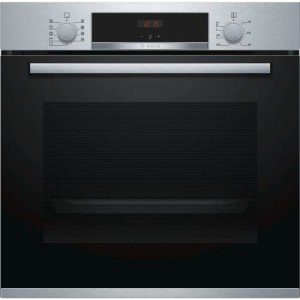The Rise of Built-In Ovens: A Seamless Approach to Modern Cooking

In modern kitchen areas, where style aesthetics mix perfectly with functionality, one device stands out as a real game changer: the built-in oven. As property owners and chefs alike continue to look for ingenious solutions that enhance their cooking experience, built-in ovens have actually ended up being significantly popular. This short article checks out the advantages, factors to consider, and patterns surrounding built-in ovens, highlighting why they are an important feature in modern-day cooking areas.
What is a Built-In Oven?
A built-in oven is a kitchen area device designed to be integrated into the cabinets of a cooking area rather than standing alone. Unlike traditional freestanding ovens, which can be moved and placed anywhere, built-in ovens been available in various styles and sizes to fit particularly within designated areas. Readily available in single or double configurations, these ovens use a structured look that complements contemporary kitchen area designs.
Advantages of Built-In Ovens
1. Space-Saving Design
Among the most appealing advantages of built-in ovens is their space-saving style. By incorporating the oven into cabinetry, you can maximize valuable counter and flooring space. This is especially advantageous in smaller kitchens, where taking full advantage of room is vital. Built-in ovens can be set up at eye level, making them more accessible and lowering the requirement to bend down.
2. Visual Appeal
Built-in ovens add to a streamlined and cohesive kitchen style. Offered in various finishes-- such as stainless-steel, black, white, and custom-made cabinets-- they can blend perfectly into the overall decor. This visual appeal enhances the kitchen's visual harmony and raises the space, developing a modern-day and sophisticated atmosphere.
3. Improved Functionality
Numerous built-in ovens come equipped with sophisticated cooking innovations, such as convection cooking, steam ovens, and clever functions. These enhancements enable flexible cooking options, making it much easier to accomplish professional-level outcomes at home. Smart built-in ovens can even link to Wi-Fi, allowing users to control the oven remotely, get notices, and access a range of cooking programs and recipes.
4. Improved Ventilation
Due to the fact that built-in ovens can be integrated with cooking area hoods and ventilation systems, they can assist maintain better air quality and decrease cooking odors. This is specifically substantial for those who love to cook with fragrant spices and components, as an effective ventilation system can keep the kitchen comfortable and inviting.
5. Personalization Options
Built-in ovens offer a large range of customization alternatives to fit individual cooking designs and requirements. From professional-grade home appliances with numerous cooking modes to compact styles for smaller sized kitchens, homeowners can pick the oven that fits their particular requirements. Lots of producers likewise use customizable front panels, allowing you to match the oven's look to your kitchen cabinetry for a genuinely unified appearance.
Factors to consider When Choosing a Built-In Oven
While built-in ovens have many benefits, there are essential considerations to remember before making a purchase:
1. Rate
Built-in ovens generally come with a greater cost than their freestanding counterparts due to their style and installation requirements. It's important to element in both the expense of the oven and any extra costs related to kitchen cabinetry modifications or installation.
2. Installation Requirements
Setting up a built-in oven often needs professional support, particularly if you need to modify existing cabinetry. Guarantee that you consider any costs related to installation, consisting of labor and potential cabinetry changes.
3. Size and Dimensions
Before acquiring a built-in oven, determine the designated area properly to guarantee a proper fit. Built-in ovens can be found in numerous sizes and configurations, so choosing one that aligns with your requirements and kitchen area design is crucial.
4. Lifestyle and Usage
Consider your cooking habits and requires when choosing a built-in oven. If ovens built in , a double oven might be more advantageous. On the other hand, if you have a compact kitchen, a single-wall oven might be adequate.
Patterns in Built-In Ovens
The kitchen home appliance market is continuously progressing, and built-in ovens are not exempt from emerging trends. Some existing patterns consist of:
Smart Technology Integration: With the increase of smart home innovation, built-in ovens now often feature connection options. This permits users to keep an eye on cooking development and adjust settings through mobile apps.
Energy Efficiency: As sustainability ends up being a top priority, lots of makers are investing in energy-efficient built-in ovens that lower energy consumption while maintaining efficiency.
Multi-functional Designs: Built-in ovens now provide features such as air frying, slow cooking, and steaming, supplying flexibility that satisfies a wide variety of cooking techniques.
Conclusion
Built-in ovens undoubtedly represent a perfect blend of design, function, and convenience in today's kitchens. As more homeowners choose this modern solution, the focus shifts to creating a cooking space that is as visually pleasing as it is useful. Whether you are constructing a new home or remodeling your cooking area, considering a built-in oven might raise your culinary experience and change your kitchen into an elegant and functional haven. With an array of alternatives readily available and ongoing innovations in innovation, built-in ovens remain a standout choice for both amateur cooks and cooking enthusiasts alike.
